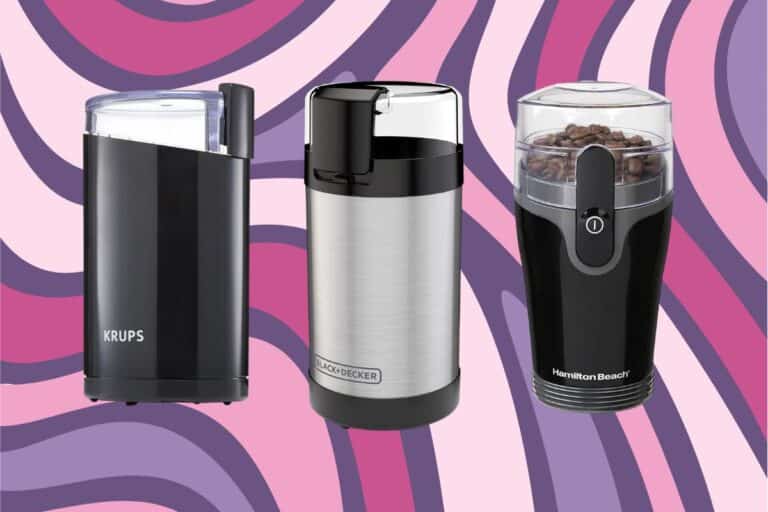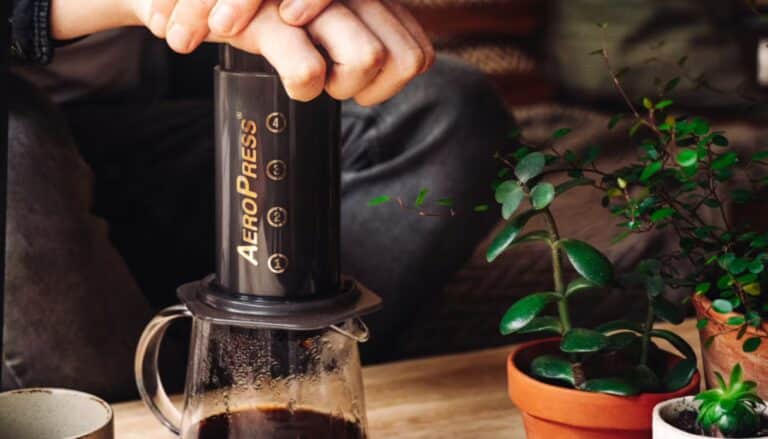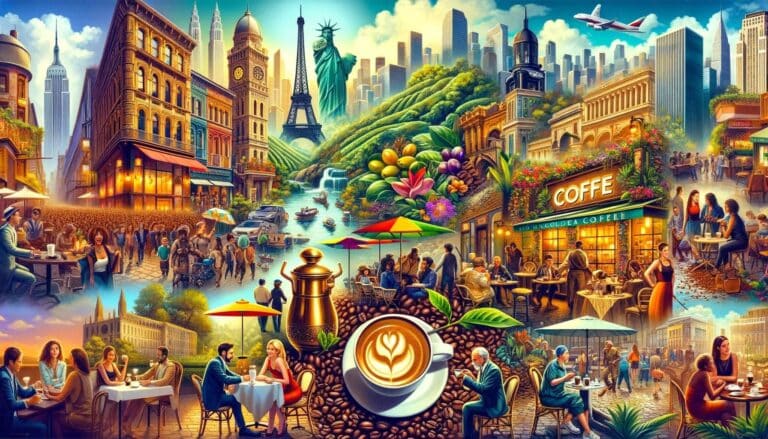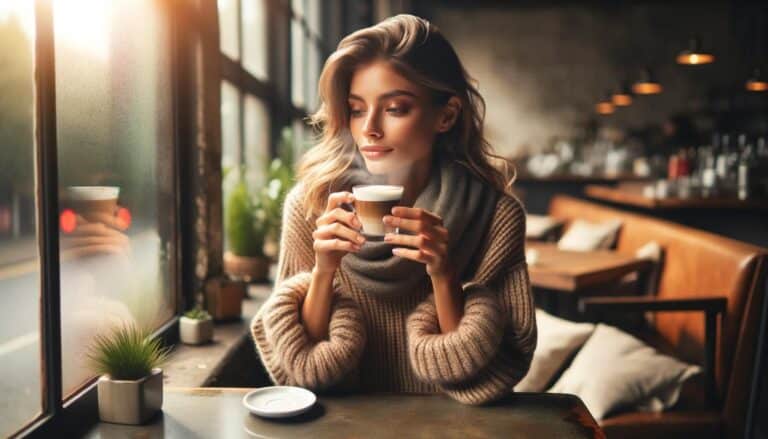The latte, a coffee shop favorite all around the world, has a fascinating story that’s deeply linked to how coffee culture has grown. It all started in Italy, where “latte” means “milk.” This term is short for “caffè latte” or “caffelatte,” which translates to “milk coffee.” Since the 17th century, this drink, made from espresso mixed with steamed milk and a bit of milk foam, has been keeping people warm. Its modern version, however, didn’t catch on until the 20th century, especially within American coffee culture.
Lattes have come a long way from being a simple morning beverage in Italian homes to becoming a worldwide sensation. This shift reflects how we’ve changed the way we drink coffee. In Italy, people usually drink lattes at home for breakfast, with more milk than a cappuccino, offering a gentler taste. But the latte as we love it today, sometimes decorated with fancy foam art, got trendy in the United States during the 1980s and 1990s. This was when specialty coffee shops started popping up everywhere. This era turned the latte into a way for baristas to show off their creativity, leading to competitions in latte art and a greater appreciation for the art of coffee making.
The latte isn’t just popular for its taste; it’s also a key part of modern coffee culture. It stands for a move towards more crafted and personalized coffee experiences. Coffee shops have transformed from places where you’d just grab a quick caffeine hit into spaces for hanging out, working, and relaxing. And the latte is often the go-to drink for these moments. Its ability to be customized with endless flavors and to fit various dietary needs has helped it win over a huge crowd.
Moreover, the latte has been crucial in making coffee a global business. It has shaped not only how we enjoy our coffee but also how it’s grown, traded, and made. From its simple beginnings to becoming a daily staple for millions, the latte’s story mirrors how our connection with coffee has evolved, showing how a basic mix of espresso and milk can turn into a cultural symbol.
What is a Latte?
A latte, short for “caffè latte” which means “milk coffee” in Italian, is a popular coffee drink made with espresso and steamed milk. The standard preparation typically involves one or two shots of espresso and a larger amount of steamed milk, with a light layer of frothed milk on top.
Understanding the Latte
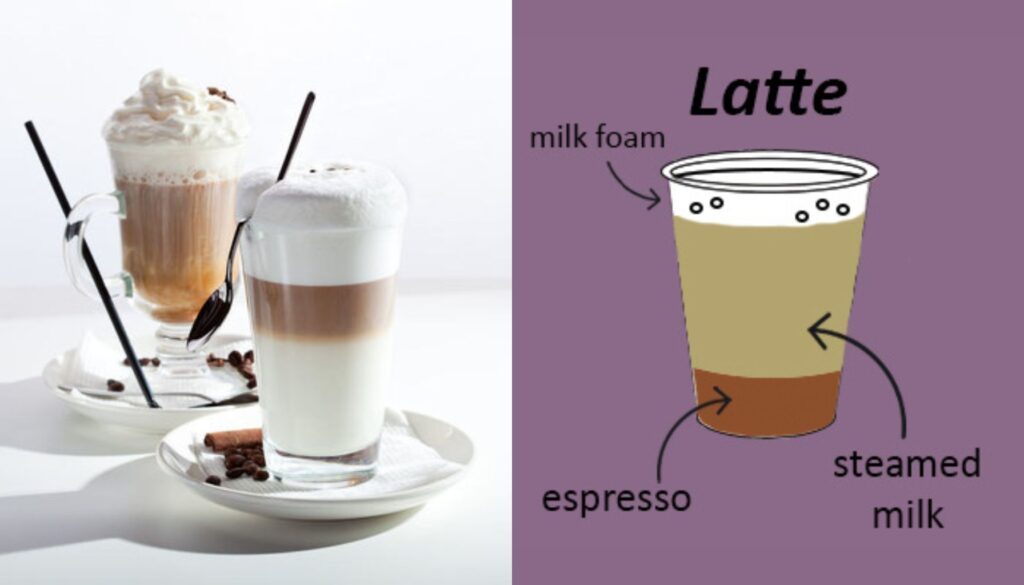
The latte stands as a key part of coffee culture, known for its perfect mix of espresso, steamed milk, and a light layer of milk foam. This blend creates a creamy and smooth drink that brings together the strong taste of espresso with the milk’s sweetness and softness. Let’s dive into what makes up a latte and how it changes around the world to see why it’s loved everywhere.
Definition of a Latte
A latte mainly has one or two shots of espresso and a lot more steamed milk, topped off with a thin layer of milk foam. The usual mix is one-third espresso to two-thirds steamed milk, with about 1 cm of foam on top. This recipe sets the latte apart from other espresso drinks like the cappuccino, which has more foam, or the flat white, known for its finer foam and stronger espresso taste.
Key Ingredients
- Espresso: The foundation of the latte, espresso is a concentrated coffee brewed by forcing a small amount of nearly boiling water through finely-ground coffee beans. Its intensity and depth are crucial for the latte’s character.
- Steamed Milk: Milk is heated and steamed to create a creamy texture that softens the espresso’s sharpness. The process of steaming milk not only warms it but also incorporates air, making it lighter and increasing its volume.
- Milk Foam: The steaming process creates a velvety foam from the milk’s surface, which is carefully layered on top of the latte. This foam can be shaped into art by skilled baristas, adding an aesthetic touch to the drink.
Variations Across Different Cultures
The latte has been adapted and reinvented across cultures, leading to a fascinating array of variations that reflect local tastes and traditions:
- Flavored Lattes: In many parts of the world, particularly in the United States, lattes are often flavored with syrups such as vanilla, caramel, or hazelnut, offering a wide range of taste experiences.
- Non-Dairy Lattes: The rise of dietary preferences and lactose intolerance has led to the popularity of lattes made with non-dairy milk alternatives, including almond, soy, oat, and coconut milk.
- Matcha Latte: A Japanese twist on the traditional latte, replacing espresso with matcha green tea powder for a caffeinated drink that’s rich in antioxidants.
- Chai Latte: Inspired by the Indian masala chai, this variation uses a spiced tea concentrate instead of espresso, blending it with steamed milk and foam for a warm, aromatic experience.
- Turmeric Latte: Also known as “golden milk,” this health-focused variant combines turmeric with steamed milk, often enhanced with other spices like cinnamon and ginger, offering a caffeine-free alternative with anti-inflammatory benefits.
These variations are testament to the latte’s versatility and its ability to transcend cultural boundaries, evolving into a beverage that can be tailored to the tastes and traditions of coffee lovers around the world.
The Making of a Latte
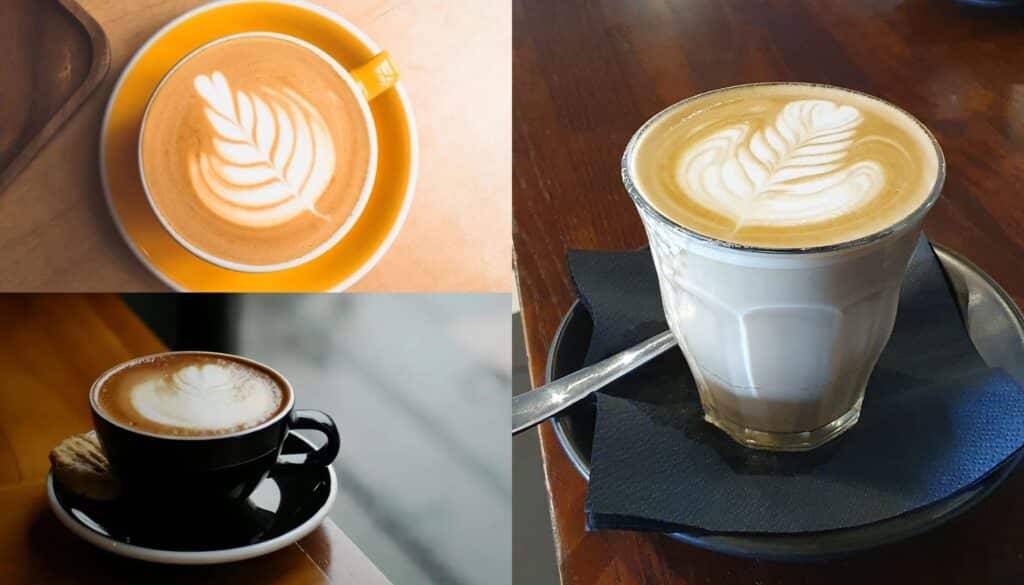
Crafting the perfect latte is an art that marries the boldness of espresso with the creaminess of steamed milk. This guide will walk you through the steps to create a traditional latte, outline the essential equipment, and share tips to refine your latte-making skills.
Equipment Needed
- Espresso Machine: The centerpiece of latte making, capable of brewing espresso and steaming milk.
- Coffee Grinder: Freshly ground coffee beans make for the best espresso.
- Tamper: Used to evenly press the ground coffee in the espresso machine’s portafilter.
- Milk Jug: A metal jug for steaming milk.
- Thermometer: Helpful for ensuring milk is steamed to the optimal temperature.
- Microfiber Cloth: For cleaning the steam wand and maintaining hygiene.
Step-by-Step Guide
- Grind the Coffee: Begin by grinding fresh coffee beans to a fine espresso grind. The grind size is crucial for extracting the full flavor of the coffee.
- Prepare the Espresso Machine: Ensure the machine is heated to the correct temperature. Clean the portafilter, and fill it with the freshly ground coffee. Use the tamper to press down firmly and evenly.
- Brew the Espresso: Lock the portafilter into the machine and start the brew. Aim for about 18-25 seconds of extraction time to get 1 to 2 ounces of espresso, depending on your preference.
- Steam the Milk: While the espresso brews, pour cold milk into the milk jug, about halfway full. Insert the steam wand into the milk, just below the surface. Turn on the steam to froth the milk, gradually lowering the jug to introduce air until the milk reaches about 150°F (65°C) to 155°F (70°C), achieving a velvety texture.
- Combine Espresso and Milk: Pour the brewed espresso into a latte cup. Then, pour the steamed milk into the cup with the espresso, starting from a low height and then raising the jug higher as you pour. Finish by spooning a small amount of foam on top.
Tips for Perfecting the Art of Latte Making
- Quality Ingredients: Start with high-quality, freshly roasted coffee beans and fresh, cold milk for the best results.
- Milk Temperature: Be careful not to overheat the milk. Overheating can scald the milk, affecting its sweetness and texture.
- Practice Pouring: The pour can influence the texture of the latte and the integration of espresso with milk. Practice pouring from different heights and speeds to achieve the perfect blend.
- Clean Equipment: Regularly clean your espresso machine and steam wand. Residual milk and coffee can affect the taste of your latte.
- Experiment: Don’t be afraid to experiment with different beans, milk types, and pouring techniques to find your perfect latte style.
Creating a latte that rivals those of the best coffee shops takes practice and patience. With these steps and tips, you’re well on your way to mastering the craft of latte making, enabling you to enjoy this beloved coffeehouse favorite from the comfort of your home.
Variations of Latte

The traditional latte, with its comforting blend of espresso and steamed milk, serves as a versatile canvas for a myriad of creative and delicious variations. These adaptations cater to a wide range of tastes, dietary preferences, and health trends, making the latte a truly global and inclusive beverage. Below, we explore the realms of flavored lattes, non-dairy alternatives, and innovative latte trends that have captured the imagination of coffee enthusiasts around the world.
Flavored Lattes
Flavored lattes add a new dimension to the classic drink by incorporating syrups or additives that infuse the latte with a variety of tastes. Some popular flavors include:
- Vanilla Latte: A classic favorite, adding a sweet and aromatic touch to the creamy latte.
- Caramel Latte: For a rich and buttery flavor, caramel syrup is a popular choice, often drizzled on top for extra indulgence.
- Hazelnut Latte: Offers a nutty, distinct flavor that complements the espresso wonderfully.
- Pumpkin Spice Latte: A seasonal favorite that combines pumpkin puree and warming spices like cinnamon, nutmeg, and clove.
These syrups and additives allow for personalization and experimentation, making each latte experience unique.
Non-Dairy Alternatives
With the rise of dietary restrictions and preferences, non-dairy milk alternatives have become a staple in cafes and homes alike. These alternatives not only cater to those who are lactose intolerant or vegan but also add unique flavors and textures to lattes:
- Soy Milk: Offers a creamy texture and subtle sweetness, making it a popular choice for lattes.
- Almond Milk: Provides a light, nutty flavor, though it may not froth as well as other milks.
- Oat Milk: Has gained popularity for its creamy consistency and environmental sustainability. It froths well, making it ideal for latte art.
- Coconut Milk: Adds a tropical twist with its rich texture and distinctive flavor.
Each alternative brings its own unique characteristics to a latte, expanding the beverage’s appeal and accessibility.
Innovative Latte Trends
In addition to traditional variations, there are several innovative latte trends that have emerged, pushing the boundaries of the classic drink:
- Charcoal Latte: Known for its striking black color, charcoal lattes contain activated charcoal, touted for its detoxifying properties.
- Matcha Latte: Replaces espresso with matcha green tea powder, offering a caffeinated drink rich in antioxidants and a vibrant green hue.
- Turmeric Latte: Also known as “golden milk,” this variation focuses on health benefits, combining turmeric with other spices and steamed milk for a caffeine-free alternative.
These innovative trends reflect the evolving landscape of coffee culture, where the desire for new flavors and health-conscious options drives the creation of unique latte experiences.
From flavored syrups to non-dairy milks and cutting-edge trends, the world of lattes is expansive and ever-changing. These variations not only cater to a broad spectrum of tastes and dietary needs but also showcase the creativity and adaptability of coffee culture worldwide.
Latte Art

Latte art represents the beautiful intersection of coffee craftsmanship and creativity, where baristas transform the simple act of pouring milk into a canvas for intricate designs. This art form enhances the overall coffee experience, adding a visual and personal touch to every cup. Let’s explore the skill, techniques, and crucial elements of milk texture and temperature that define latte art.
Overview of Latte Art as a Skill and Art Form
Latte art is the technique of pouring steamed milk into espresso in such a way that creates patterns or designs on the surface. It requires a precise combination of the right milk consistency, pouring technique, and espresso strength. Mastering latte art is considered a hallmark of a skilled barista, reflecting their expertise and dedication to their craft.
The practice not only enhances the aesthetic appeal of the drink but also signifies the quality of the espresso shot and steamed milk. Good latte art is often indicative of a well-prepared beverage, where the espresso has a rich crema and the milk is steamed to a silky texture, ensuring the drink tastes as good as it looks.
Basic Techniques for Creating Latte Art
Creating latte art involves a few fundamental techniques, starting from the preparation of the espresso and milk to the final pour. Here are the basic steps:
- Prepare a Quality Espresso Shot: A rich and creamy crema is essential for good latte art. The espresso serves as the canvas for your milk designs.
- Steam Milk to the Right Consistency: The milk should be steamed to achieve a velvety microfoam, where tiny air bubbles create a smooth texture. The temperature should be around 140°F to 155°F (60°C to 68°C) to avoid scalding the milk and to ensure optimal sweetness.
- Pouring Technique:
- Free Pour: The most common method for creating designs like hearts or rosettas. Begin by pouring steamed milk from a height into the center of the espresso, then move the pitcher closer to the surface as the cup fills, allowing the milk to flow more forcefully and create patterns.
- Etching: Using a tool to draw directly on the foam, etching can create more intricate designs, though these typically dissipate quicker than those made by free pouring.
Importance of Milk Texture and Temperature
The texture and temperature of the milk are pivotal for successful latte art. The process of steaming milk not only heats it but also introduces air, creating microfoam. This microfoam is essential for latte art, as it allows the milk to be poured with precision and to hold its shape when it interacts with the espresso.
- Texture: Perfect microfoam is achieved by introducing just the right amount of air and incorporating it thoroughly into the milk. This creates a glossy, smooth milk that flows easily and can be manipulated into art.
- Temperature: Heating milk to the correct temperature is crucial; too hot, and the milk will lose its sweetness and the ability to form stable foam. Too cold, and the foam won’t integrate well with the espresso. The optimal temperature range enhances the milk’s natural sweetness and ensures the foam’s stability for art.
Mastering latte art is a journey of patience, practice, and attention to detail, symbolizing the barista’s skill and passion for coffee. Beyond its visual appeal, latte art is a celebration of the care and quality that goes into every cup, offering a moment of joy and connection for both the creator and the recipient.
The Role of the Latte in Coffee Culture
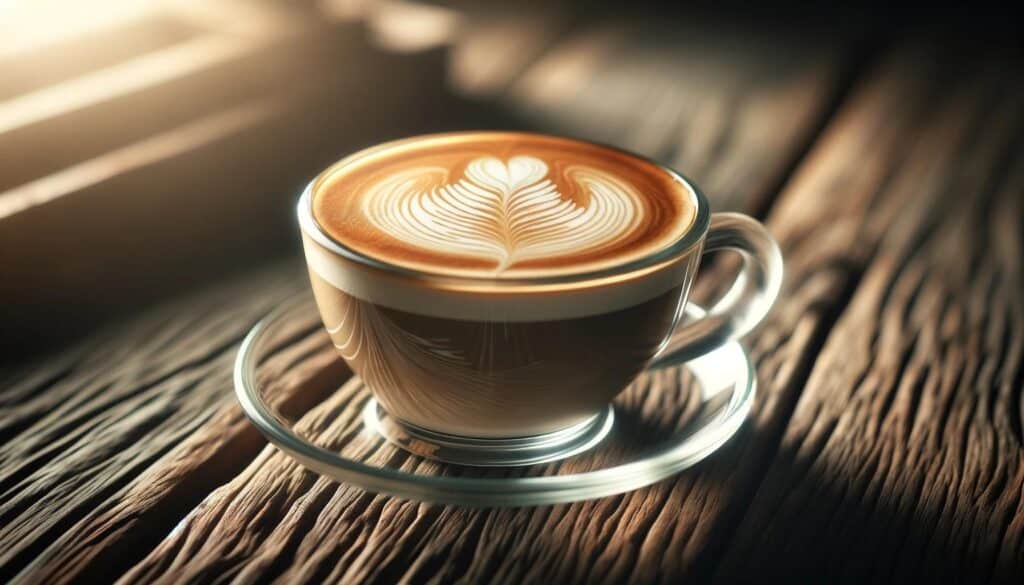
The latte, with its perfect mix of espresso, steamed milk, and just a bit of foam, is a beloved favorite in the coffee community. Its growth and lasting appeal shine a light on the bigger changes and trends in coffee culture, especially as specialty coffee has risen from a small specialty to a worldwide hit. To get why lattes are so important, we need to explore their role in the specialty coffee movement, how they stand out from other coffee drinks, and their place as a social favorite.
Lattes and the Specialty Coffee Movement
The specialty coffee movement puts a big emphasis on quality, where the coffee comes from, and how it’s made. This movement has warmly welcomed the latte, using it as a way to show off a barista’s skills and the coffee’s quality. Making lattes gives a special chance to mix the strong flavor of espresso with the gentle taste of steamed milk, a task that needs a lot of knowledge about how coffee and milk work together. This movement has also sparked new ideas in latte art, making the drink not just something to enjoy by tasting but also by looking at, showcasing the barista’s artistry.
Comparison with Other Coffee Drinks
- Cappuccino: Traditionally more foam-focused than a latte, a cappuccino features a 1:1:1 ratio of espresso, steamed milk, and foam. This results in a stronger espresso flavor compared to the smoother, milkier latte.
- Flat White: Originating from Australia/New Zealand, the flat white is similar to a latte but typically served in a smaller cup with less milk, leading to a higher coffee-to-milk ratio. The milk is steamed without creating much foam, resulting in a velvety texture that enhances the espresso’s flavor.
- Americano: Consisting of espresso diluted with hot water, the Americano is a completely different experience, emphasizing the espresso’s flavors without the addition of milk or foam.
These distinctions underscore the latte’s appeal as a milder, creamier coffee option, accessible to those who might find straight espresso too intense or bitter.
Latte as a Social Phenomenon
Beyond its culinary attributes, the latte has become a cultural icon, embodying the social aspect of coffee consumption. Coffee shops, central to many communities, serve as spaces for social interaction, work, and leisure, with the latte often at the center of this experience. Its versatility has made it a favorite among a wide range of coffee drinkers, from aficionados to casual café-goers.
Moreover, the rise of social media has turned latte art into a visual spectacle, with images of beautifully crafted lattes shared widely, further cementing its status within modern coffee culture. This visual aspect has introduced a new dimension to coffee appreciation, where aesthetics and flavor converge to create a holistic experience.
The latte’s role in coffee culture is multifaceted. It is a testament to the craftsmanship involved in coffee preparation, a marker of the specialty coffee movement’s influence, and a symbol of the communal and social aspects of coffee consumption. Its comparison with other coffee drinks highlights its unique position as a gentler introduction to espresso-based beverages, while its evolution into a social phenomenon underscores the changing dynamics of how we interact with and enjoy coffee in the 21st century.
Health and Nutrition: The Latte Examined

Lattes, a beloved component of daily routines for many, balance the rich flavor of espresso with the creamy texture of steamed milk. Understanding the nutritional breakdown of a standard latte, its health benefits and concerns, and how it can fit into a balanced diet is essential for coffee enthusiasts who prioritize their health and wellness.
Nutritional Breakdown of a Standard Latte
A typical 12-ounce (355 ml) latte made with whole milk and a single shot of espresso contains approximately:
- Calories: 150-200
- Protein: 8-10 grams
- Fat: 7-9 grams (with about 5 grams of saturated fat)
- Carbohydrates: 12-15 grams
- Sugar: 11-14 grams (naturally occurring in milk)
- Calcium: 20-30% of the Daily Value
These values can vary significantly based on the type of milk used (whole, skim, plant-based), the amount of espresso, and any added flavors or sweeteners.
Health Benefits and Concerns of Regular Latte Consumption
Benefits:
- Protein and Calcium: Lattes can be a good source of protein and calcium, especially when made with dairy milk, supporting bone health and muscle function.
- Antioxidants: Coffee itself is rich in antioxidants, which can reduce inflammation and protect against certain diseases.
Concerns:
- Caloric Intake: Lattes made with whole milk or sweetened with syrups can contribute to a high caloric intake, potentially leading to weight gain if consumed in excess.
- Sugar Content: While the natural sugars in milk are not a major concern, added sugars from flavored syrups can significantly increase the sugar content, impacting blood sugar levels and overall health.
- Caffeine: Regular consumption of caffeinated beverages like lattes can lead to caffeine dependence and may affect sleep quality in sensitive individuals.
Enjoying Lattes as Part of a Balanced Diet
To enjoy lattes without compromising on health:
- Opt for Low-Fat or Plant-Based Milks: Choosing skim, almond, soy, or oat milk can reduce the calorie and fat content of your latte.
- Minimize Added Sugars: Enjoy the natural sweetness of milk, or opt for sugar-free syrups and flavorings.
- Watch Portion Sizes: Consider smaller sizes to keep calorie and caffeine intake in check.
- Balance Intake: If you enjoy a daily latte, ensure it fits within a balanced diet rich in fruits, vegetables, whole grains, and lean proteins.
- Stay Hydrated: Remember to drink plenty of water throughout the day, as caffeine can have diuretic effects.
Lattes, when consumed mindfully, can be part of a healthful and balanced diet. By making informed choices about ingredients and portion sizes, coffee lovers can continue to savor their favorite beverage without sacrificing their health goals.
At-Home vs. Café Lattes
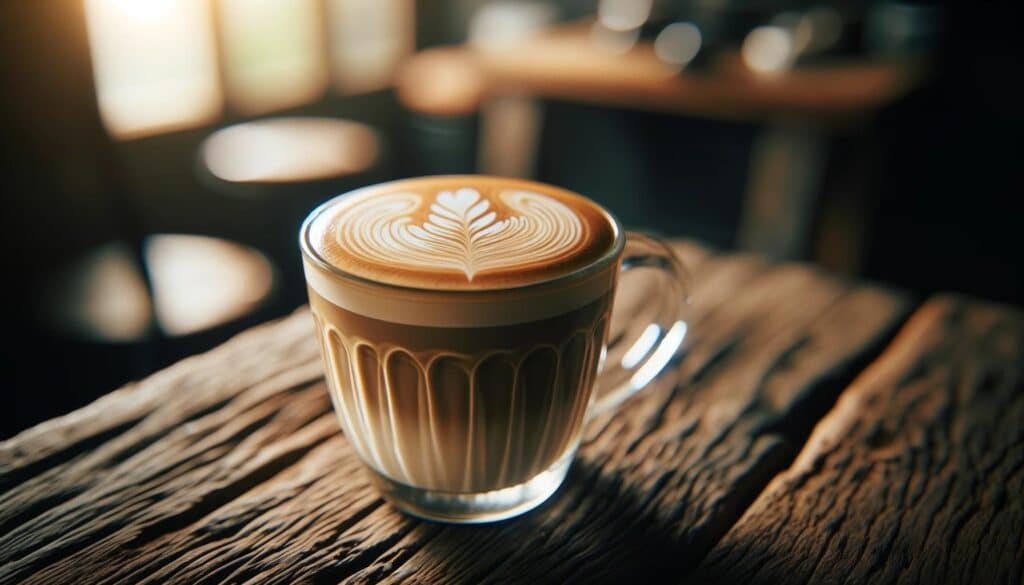
The ritual of enjoying a latte can vary significantly depending on whether it’s crafted in the comfort of one’s home or savored at a local café. Both experiences offer unique benefits and drawbacks in terms of ambiance, quality, and cost. Understanding these differences can help coffee aficionados make informed decisions about where and how they enjoy their favorite brew.
Comparing the Experience and Quality
At-Home Lattes:
- Customization: Making lattes at home allows for complete control over the choice of coffee beans, milk type, flavorings, and strength of the coffee, tailoring each cup to personal preference.
- Convenience: Enjoying a latte at home can be more convenient, especially for those with a busy routine or limited access to quality cafés.
- Skill Development: Preparing lattes at home offers the opportunity to learn and refine the art of coffee making, including espresso extraction and milk steaming.
Café-Prepared Lattes:
- Professional Quality: Baristas in cafés are trained professionals who can consistently produce high-quality lattes, often with superior milk texture and espresso extraction.
- Social Atmosphere: Cafés provide a unique social setting and ambiance that can enhance the coffee-drinking experience, offering a space for relaxation, work, or socialization.
- Variety: Visiting a café can expose one to a wider variety of coffee beans and brewing techniques, potentially introducing new flavors and styles.
The Economics of Making Lattes at Home
Cost-Effectiveness: Initially, investing in a good espresso machine and grinder might seem expensive, but over time, making lattes at home can be more cost-effective than buying them at a café. The cost per cup at home primarily involves coffee beans and milk, which is generally lower than café prices.
Long-Term Savings: Regular café-goers might find significant savings by shifting even a portion of their coffee consumption to home brewing. The break-even point depends on the initial investment and the frequency of café visits replaced by home brewing.
How to Choose the Right Equipment for Home Brewing
- Espresso Machine: Look for a machine that fits your budget and kitchen space, keeping in mind features like pressure consistency, milk steaming capability, and ease of use. For beginners, semi-automatic machines offer a good balance between control and convenience.
- Grinder: A quality burr grinder is crucial for achieving the fine, consistent grind needed for espresso. Consider grinders with adjustable settings to fine-tune your grind size.
- Milk Frother/Steamer: While many espresso machines come with a built-in steamer, standalone milk frothers are also available for those without one. Look for devices that can produce smooth, velvety microfoam.
- Accessories: A tamper, milk jug, and thermometer can enhance the brewing experience and improve the quality of your lattes.
Choosing the right equipment involves a balance of budget, space, and personal preference. With the right setup, making lattes at home can become a rewarding part of your daily routine, offering both savings and the satisfaction of a perfectly personalized coffee experience.
Conclusion: Celebrating the Latte in Coffee Culture
The latte shines brightly in the coffee world, standing for both the deep traditions and the fresh, innovative vibes of coffee culture. It started in Italy but has grown into a worldwide coffee favorite. More than just a drink, the latte serves as a creative outlet, a masterpiece of craft, and a way to bring people together. You can see its flexibility in the many adaptations it has undergone, from different kinds of milk to exciting flavors and ingredients like matcha or turmeric, pleasing a vast range of tastes and diets.
As the latte has traveled through time, it mirrors how our coffee drinking habits have evolved. We now seek out the best quality, appreciate the art of making it, and enjoy sharing it with others, lifting the whole coffee experience. Cafés across the globe have become places where baristas show off their latte art skills, making each cup a unique connection between the person who makes it and the person who drinks it. Plus, the growing trend of brewing coffee at home has let coffee lovers get into the fine details of coffee making, bringing the fancy café vibe right into their kitchens.
Looking at the latte’s place in the bigger picture of specialty coffee, it’s clear that it’s more than a morning energy boost; it symbolizes the important role coffee plays in our lives. It invites us to pause and enjoy the moment, whether we’re soaking up the social buzz of our go-to café or cherishing the quiet of our kitchen.
Encouragement to Explore and Experiment
If you haven’t jumped into the latte scene yet, now’s the time. Finding your perfect latte mix, trying out milk alternatives, or getting the hang of latte foam can be a fun journey that brings you closer to coffee. Whether you’re deep into your coffee journey or just starting out, making a latte is a perfect mix of science and creativity that adds joy and fulfillment to every cup.
We invite you to try out all the different things lattes have to offer. Play around with various beans, milks, and flavors. Share your new creations with friends and family. Join the lively world of coffee fans around you. And most importantly, appreciate the effort that goes into each cup, from the farm, to the café, to your home.
The latte welcomes us to celebrate coffee’s beauty, pushing us to explore, experiment, and enjoy life’s simple pleasures. So, here’s a toast to the latte—may it keep inspiring us, bringing us together, and showing us the incredible art and community coffee can create.
